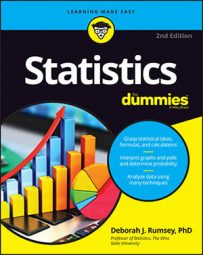There are two major types of statistical studies: surveys and experiments. After a question has been formed, researchers must design an effective study to collect data that will help answer that question. This means that they must decide whether to use a survey or experiment to get the data they need.
Statistical surveys
An observational study is one in which data is collected on individuals in a way that doesn’t affect them. The most common observational study is the survey. Surveys are questionnaires that are presented to individuals who have been selected from a population of interest. Surveys take many different forms: paper surveys sent through the mail, questionnaires on Web sites, call-in polls conducted by TV networks, phone surveys, and so on.
If conducted properly, surveys can be very useful tools for getting information. However, if not conducted properly, surveys can result in bogus information. Some problems include improper wording of questions, which can be misleading, lack of response by people who were selected to participate, or failure to include an entire group of the population. These potential problems mean a survey has to be well thought out before it’s given.
Statistical experiments
An experiment imposes one or more treatments on the participants in such a way that clear comparisons can be made. After the treatments are applied, the responses are recorded. For example, to study the effect of drug dosage on blood pressure, one group may take 10 mg of the drug, and another group may take 20 mg. Typically, a control group is also involved, in which subjects each receive a fake treatment (a sugar pill, for example), or a standard, nonexperimental treatment (like the existing drugs given to AIDS patients.)
When designed correctly, an experiment can help a researcher establish a cause-and-effect relationship if the difference in responses between the treatment group and the control group is statistically significant (unlikely to have occurred just by chance).
Experiments are credited with helping to create and test drugs, determining best practices for making and preparing foods, and evaluating whether a new treatment can cure a disease, or at least reduce its impact. Our quality of life has certainly been improved through the use of well-designed experiments. However, not all experiments are well-designed, and your ability to determine which results are credible and which results are incredible (pun intended) is critical, especially when the findings are very important to you.

